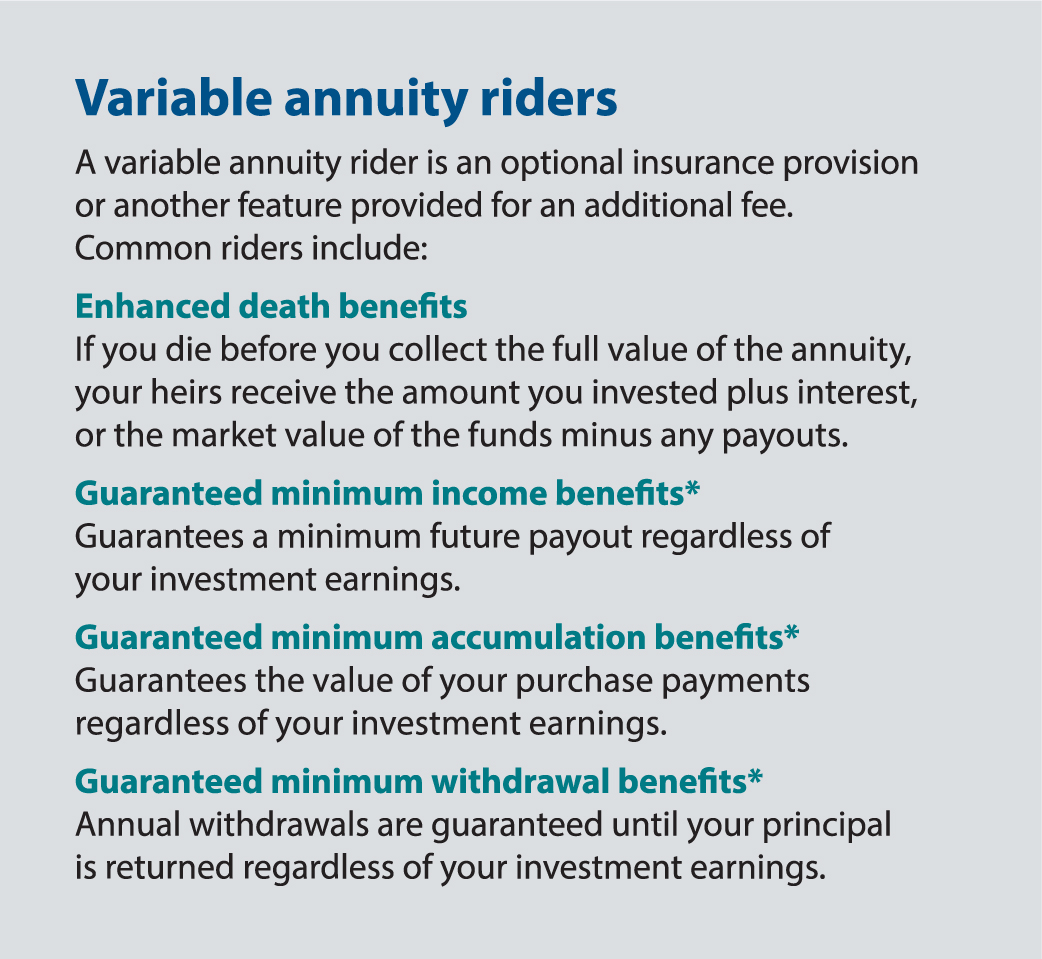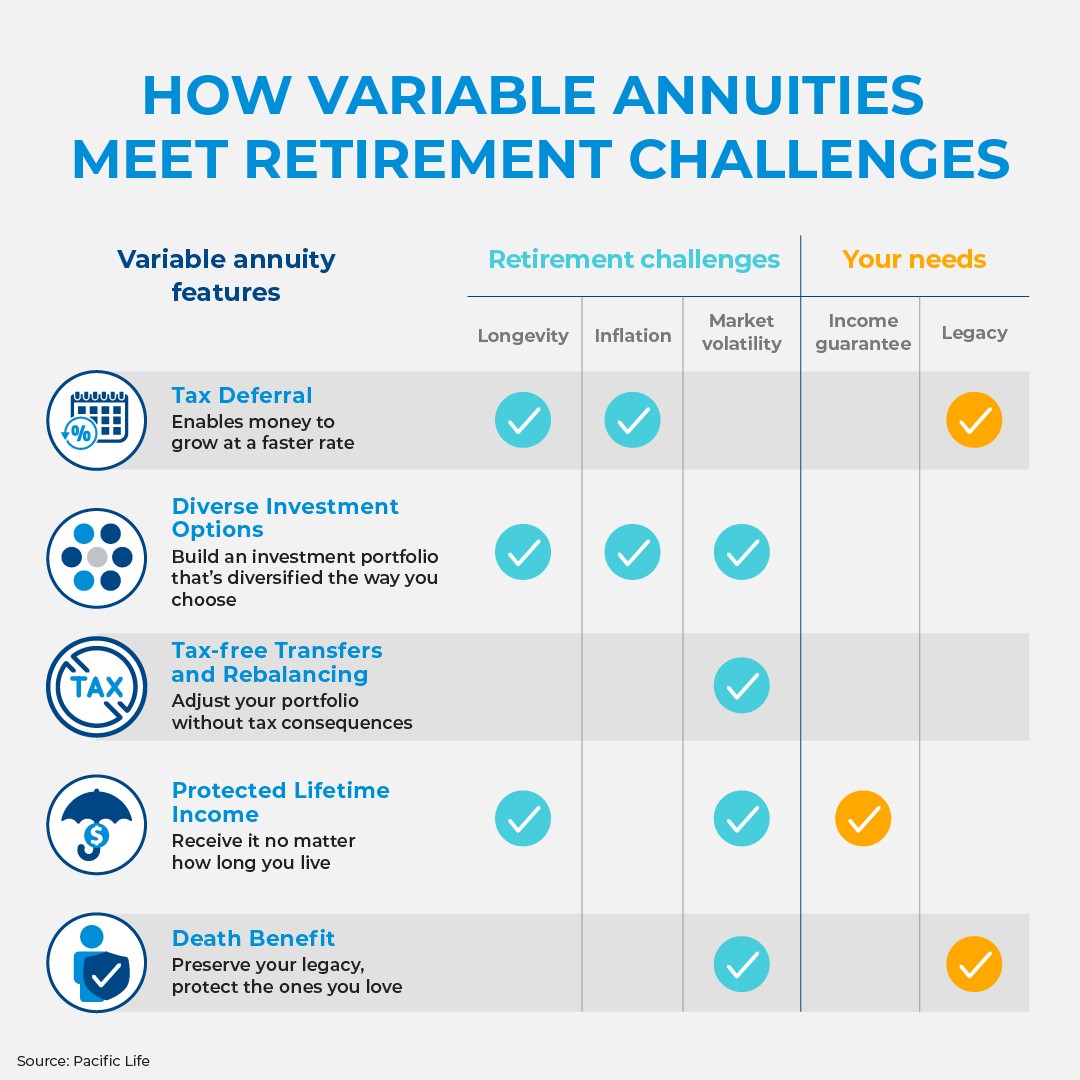Featured
Table of Contents
The payment could be spent for development for a lengthy duration of timea single premium delayed annuityor spent for a short time, after which payment beginsa single costs prompt annuity. Solitary costs annuities are frequently funded by rollovers or from the sale of an appreciated property. An adaptable premium annuity is an annuity that is intended to be moneyed by a series of payments.
Owners of repaired annuities know at the time of their purchase what the worth of the future cash money flows will be that are produced by the annuity. Certainly, the variety of capital can not be recognized beforehand (as this depends upon the contract owner's life-span), but the assured, repaired rate of interest at the very least offers the owner some level of assurance of future income from the annuity.
While this distinction appears basic and straightforward, it can considerably impact the worth that a contract owner ultimately originates from his or her annuity, and it develops substantial unpredictability for the contract owner - Income annuities for retirement. It likewise usually has a material effect on the level of fees that an agreement owner pays to the providing insurer
Set annuities are commonly made use of by older financiers that have limited possessions however that wish to balance out the danger of outliving their assets. Set annuities can act as a reliable tool for this function, though not without specific drawbacks. For instance, in the case of prompt annuities, when an agreement has been bought, the agreement owner relinquishes any and all control over the annuity properties.
Exploring Fixed Vs Variable Annuity Pros And Cons A Comprehensive Guide to Investment Choices Defining Fixed Vs Variable Annuity Pros Cons Pros and Cons of Fixed Index Annuity Vs Variable Annuity Why Choosing the Right Financial Strategy Is Worth Considering How to Compare Different Investment Plans: A Complete Overview Key Differences Between Different Financial Strategies Understanding the Key Features of Variable Annuity Vs Fixed Annuity Who Should Consider Strategic Financial Planning? Tips for Choosing the Best Investment Strategy FAQs About Planning Your Financial Future Common Mistakes to Avoid When Planning Your Retirement Financial Planning Simplified: Understanding Your Options A Beginner’s Guide to Fixed Vs Variable Annuity Pros And Cons A Closer Look at Fixed Annuity Vs Variable Annuity
For instance, an agreement with a common 10-year abandonment duration would bill a 10% surrender cost if the contract was surrendered in the very first year, a 9% surrender fee in the second year, and so forth till the abandonment cost gets to 0% in the agreement's 11th year. Some deferred annuity agreements include language that enables for small withdrawals to be made at different periods throughout the abandonment period scot-free, though these allocations usually come at an expense in the kind of lower guaranteed rates of interest.
Equally as with a dealt with annuity, the proprietor of a variable annuity pays an insurance provider a lump sum or collection of settlements in exchange for the guarantee of a collection of future payments in return. But as discussed above, while a dealt with annuity grows at an assured, constant price, a variable annuity grows at a variable price that depends upon the performance of the underlying financial investments, called sub-accounts.
During the build-up phase, properties bought variable annuity sub-accounts expand on a tax-deferred basis and are exhausted only when the agreement owner takes out those earnings from the account. After the accumulation phase comes the revenue stage. With time, variable annuity possessions ought to in theory increase in worth until the contract owner chooses he or she would such as to start taking out cash from the account.
The most substantial concern that variable annuities commonly existing is high expense. Variable annuities have several layers of fees and expenses that can, in aggregate, produce a drag of as much as 3-4% of the agreement's worth every year. Below are one of the most common fees associated with variable annuities. This expenditure compensates the insurance firm for the danger that it presumes under the regards to the agreement.
M&E expense charges are determined as a percentage of the contract value Annuity providers hand down recordkeeping and various other administrative costs to the agreement proprietor. This can be in the form of a flat annual cost or a portion of the agreement worth. Management charges might be included as part of the M&E threat cost or might be assessed independently.
These charges can vary from 0.1% for easy funds to 1.5% or more for actively managed funds. Annuity contracts can be customized in a number of methods to serve the particular requirements of the agreement owner. Some usual variable annuity motorcyclists consist of guaranteed minimum buildup advantage (GMAB), assured minimum withdrawal benefit (GMWB), and guaranteed minimum revenue advantage (GMIB).
Highlighting the Key Features of Long-Term Investments Everything You Need to Know About Financial Strategies What Is Fixed Vs Variable Annuity Pros Cons? Pros and Cons of Fixed Indexed Annuity Vs Market-variable Annuity Why Fixed Indexed Annuity Vs Market-variable Annuity Can Impact Your Future Fixed Indexed Annuity Vs Market-variable Annuity: How It Works Key Differences Between Variable Annuity Vs Fixed Annuity Understanding the Key Features of Long-Term Investments Who Should Consider Strategic Financial Planning? Tips for Choosing Fixed Vs Variable Annuity FAQs About Planning Your Financial Future Common Mistakes to Avoid When Planning Your Retirement Financial Planning Simplified: Understanding Fixed Annuity Vs Variable Annuity A Beginner’s Guide to Smart Investment Decisions A Closer Look at How to Build a Retirement Plan
Variable annuity payments give no such tax deduction. Variable annuities have a tendency to be extremely inefficient lorries for passing wealth to the next generation since they do not appreciate a cost-basis adjustment when the initial contract owner dies. When the proprietor of a taxed financial investment account passes away, the expense bases of the investments kept in the account are adapted to reflect the market prices of those investments at the time of the owner's death.
Heirs can inherit a taxable investment profile with a "tidy slate" from a tax obligation point of view. Such is not the instance with variable annuities. Investments held within a variable annuity do not receive a cost-basis change when the original proprietor of the annuity passes away. This implies that any kind of collected latent gains will be handed down to the annuity owner's successors, together with the associated tax obligation problem.

One substantial problem related to variable annuities is the capacity for problems of interest that may exist on the component of annuity salesmen. Unlike an economic advisor, that has a fiduciary obligation to make investment decisions that benefit the customer, an insurance policy broker has no such fiduciary responsibility. Annuity sales are highly financially rewarding for the insurance coverage professionals that sell them as a result of high in advance sales commissions.
Lots of variable annuity contracts consist of language which positions a cap on the percentage of gain that can be experienced by particular sub-accounts. These caps avoid the annuity proprietor from completely joining a portion of gains that can or else be enjoyed in years in which markets create significant returns. From an outsider's viewpoint, it would seem that investors are trading a cap on financial investment returns for the abovementioned ensured flooring on financial investment returns.
Highlighting the Key Features of Long-Term Investments A Closer Look at Variable Annuity Vs Fixed Indexed Annuity Defining Indexed Annuity Vs Fixed Annuity Advantages and Disadvantages of Annuities Fixed Vs Variable Why Fixed Vs Variable Annuity Matters for Retirement Planning Fixed Index Annuity Vs Variable Annuities: Simplified Key Differences Between Fixed Interest Annuity Vs Variable Investment Annuity Understanding the Risks of Long-Term Investments Who Should Consider Fixed Annuity Or Variable Annuity? Tips for Choosing the Best Investment Strategy FAQs About Planning Your Financial Future Common Mistakes to Avoid When Planning Your Retirement Financial Planning Simplified: Understanding Your Options A Beginner’s Guide to Annuity Fixed Vs Variable A Closer Look at Fixed Indexed Annuity Vs Market-variable Annuity
As noted above, give up charges can drastically restrict an annuity proprietor's ability to move assets out of an annuity in the very early years of the contract. Even more, while most variable annuities permit contract proprietors to take out a specified quantity throughout the buildup stage, withdrawals yet amount commonly lead to a company-imposed cost.
Withdrawals made from a set passion rate investment choice might also experience a "market price modification" or MVA. An MVA readjusts the worth of the withdrawal to reflect any type of modifications in rates of interest from the time that the cash was invested in the fixed-rate option to the time that it was taken out.

Frequently, even the salespeople who market them do not totally recognize how they work, therefore salesmen sometimes exploit a purchaser's feelings to market variable annuities as opposed to the values and suitability of the items themselves. Our company believe that financiers must fully understand what they have and exactly how much they are paying to possess it.
The exact same can not be claimed for variable annuity possessions held in fixed-rate financial investments. These assets legally come from the insurer and would for that reason be at threat if the company were to stop working. Likewise, any assurances that the insurance provider has consented to supply, such as a guaranteed minimum earnings advantage, would be in question in the event of an organization failure.
Exploring the Basics of Retirement Options Key Insights on Your Financial Future Breaking Down the Basics of What Is A Variable Annuity Vs A Fixed Annuity Pros and Cons of Fixed Annuity Vs Equity-linked Variable Annuity Why Fixed Vs Variable Annuity Is Worth Considering Fixed Annuity Vs Variable Annuity: Simplified Key Differences Between Fixed Income Annuity Vs Variable Growth Annuity Understanding the Rewards of Long-Term Investments Who Should Consider Strategic Financial Planning? Tips for Choosing the Best Investment Strategy FAQs About Fixed Annuity Or Variable Annuity Common Mistakes to Avoid When Planning Your Retirement Financial Planning Simplified: Understanding Fixed Income Annuity Vs Variable Annuity A Beginner’s Guide to Variable Vs Fixed Annuities A Closer Look at Fixed Vs Variable Annuity
Prospective purchasers of variable annuities should understand and take into consideration the monetary problem of the releasing insurance business before getting in into an annuity agreement. While the advantages and downsides of various types of annuities can be disputed, the actual concern bordering annuities is that of suitability. In other words, the inquiry is: that should possess a variable annuity? This inquiry can be tough to address, provided the myriad variations readily available in the variable annuity world, but there are some fundamental guidelines that can assist investors choose whether annuities must play a duty in their economic plans.
As the stating goes: "Buyer beware!" This short article is prepared by Pekin Hardy Strauss, Inc. ("Pekin Hardy," dba Pekin Hardy Strauss Riches Management) for informational objectives just and is not planned as an offer or solicitation for company. The info and data in this article does not constitute legal, tax, accounting, financial investment, or various other expert advice.
Table of Contents
Latest Posts
Understanding Financial Strategies Key Insights on Annuities Variable Vs Fixed What Is Fixed Vs Variable Annuities? Features of Smart Investment Choices Why Choosing the Right Financial Strategy Matte
Exploring Pros And Cons Of Fixed Annuity And Variable Annuity A Closer Look at How Retirement Planning Works Breaking Down the Basics of Fixed Income Annuity Vs Variable Annuity Benefits of Choosing t
Highlighting the Key Features of Long-Term Investments A Comprehensive Guide to Investment Choices Breaking Down the Basics of Investment Plans Advantages and Disadvantages of Different Retirement Pla
More
Latest Posts